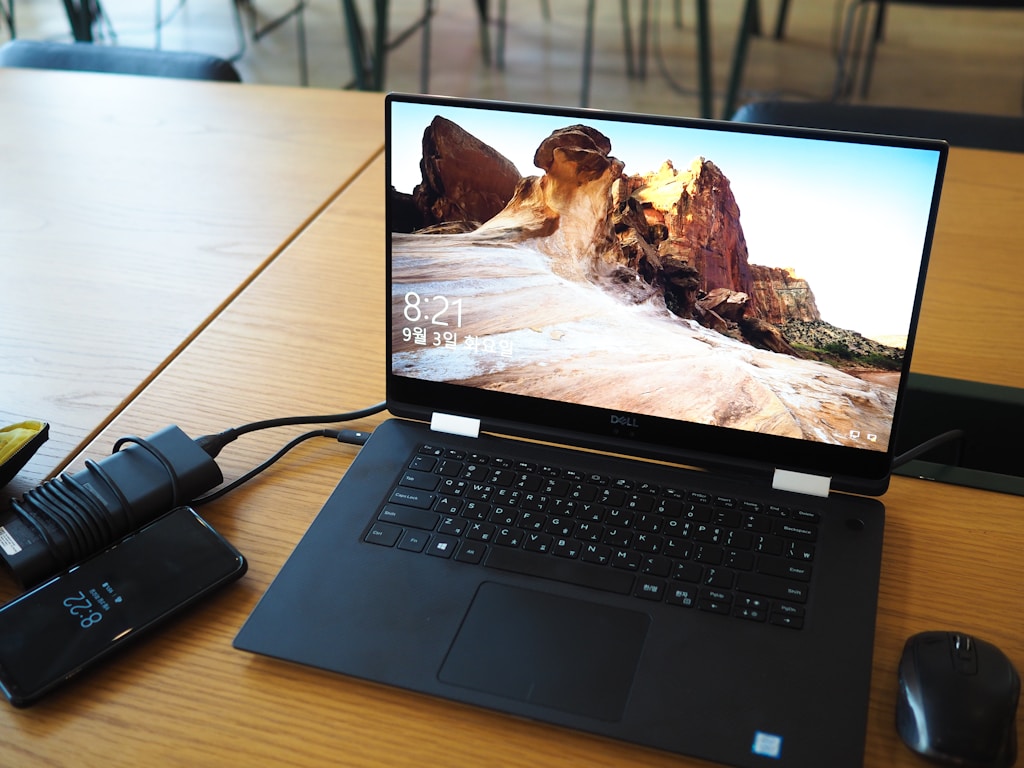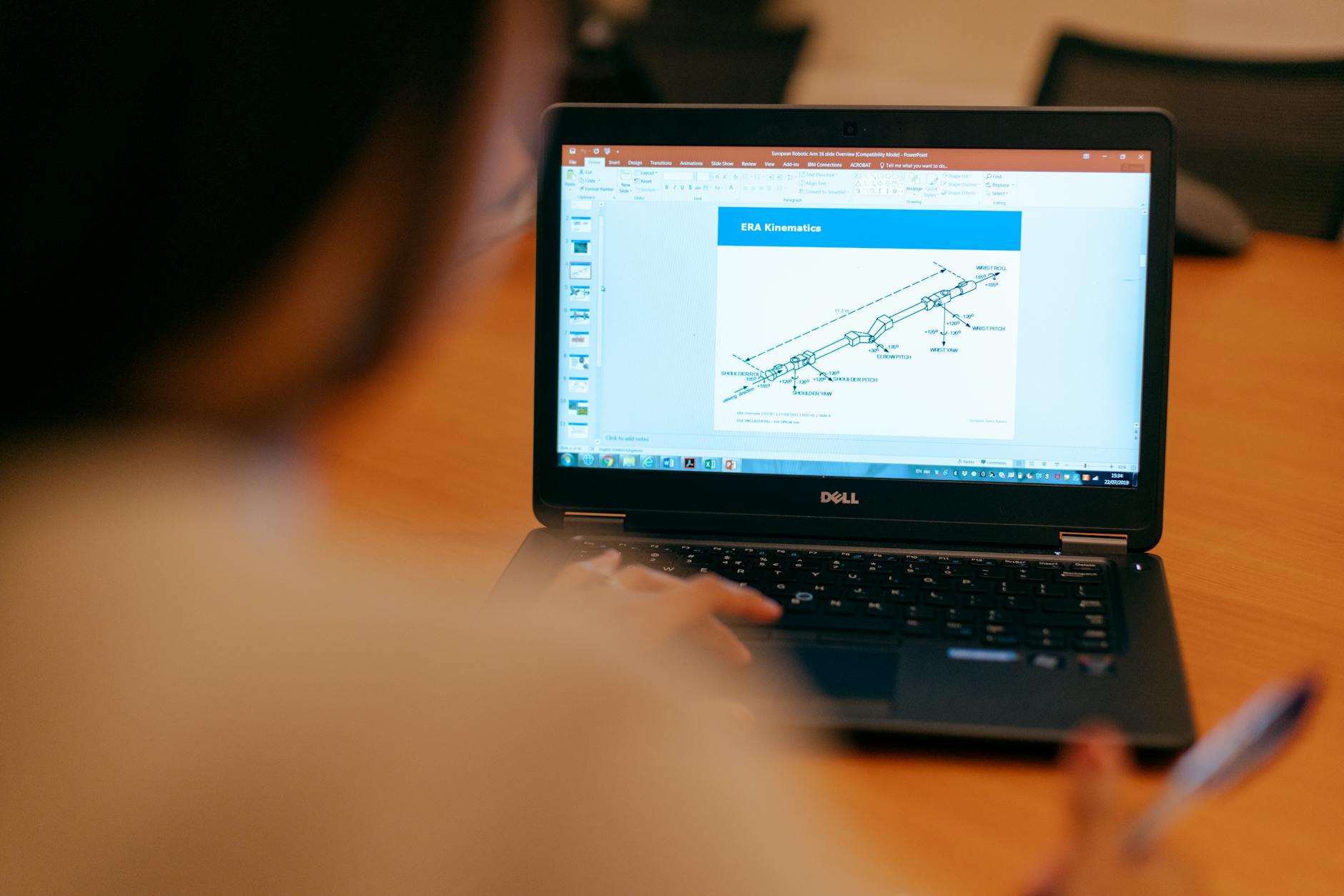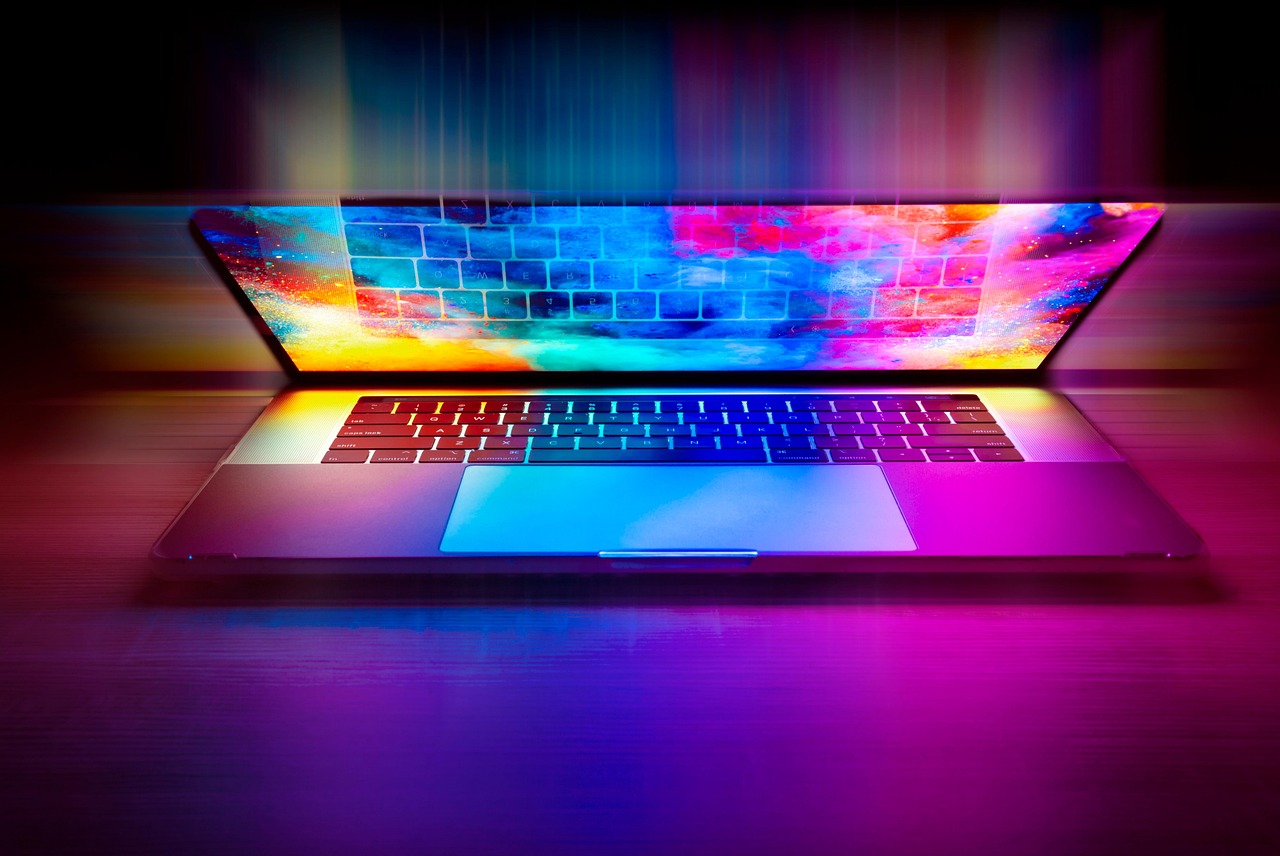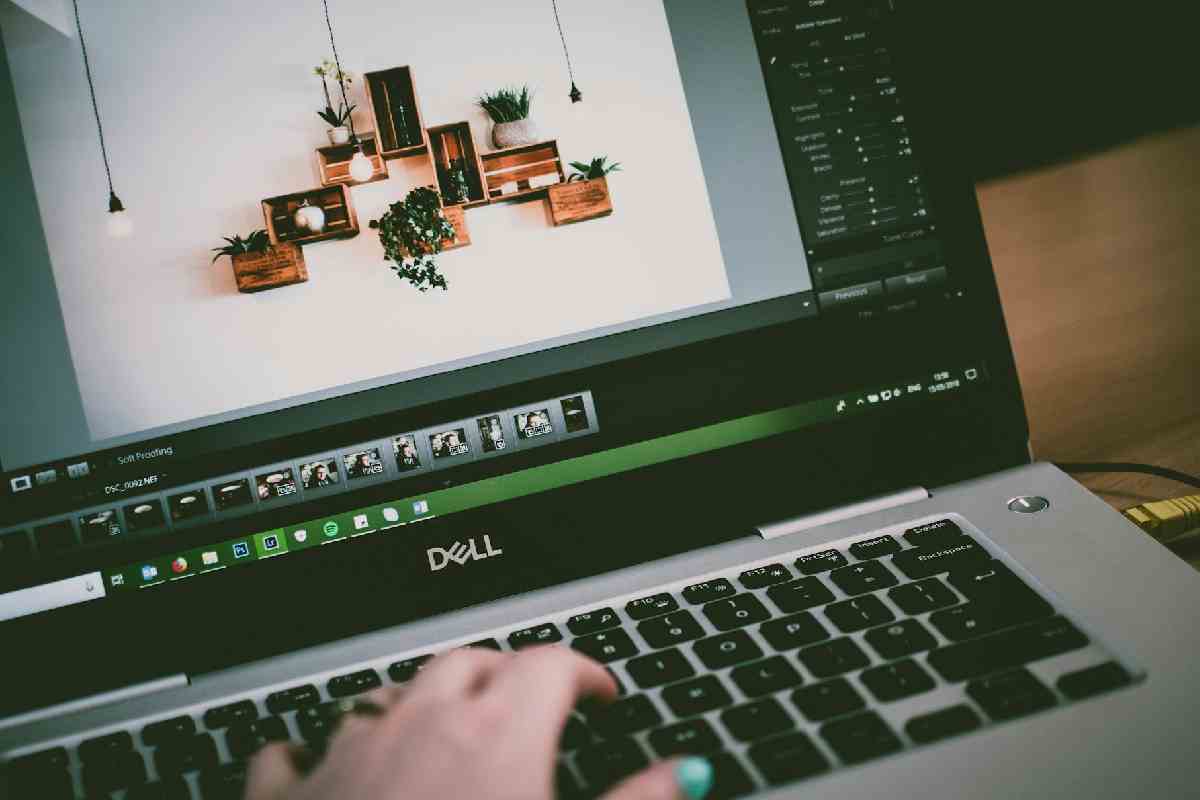In the flashy, high-octane world of personal technology, we are constantly bombarded with the “new.” We are sold dreams of razor-thin aluminum sheets, screens that fold in half, and RGB lights that pulse to the beat of our music. We are told that a laptop is a fashion accessory, a status symbol that must look good on a coffee shop table.
But there is a quiet giant in the room. A machine that doesn’t care about fashion. A machine that doesn’t care about trends. It cares about one thing, and one thing only: getting the job done.
That machine is the Dell Latitude.
If you work in a corporate office, a hospital, a government agency, or a university, you likely know the shape. The matte black chassis. The sturdy hinges. The no-nonsense ports. To the uninitiated, it looks “boring.” But to those in the know—IT professionals, tech experts, and savvy budget hunters—the Dell Latitude is the gold standard. It is the “Toyota Land Cruiser” of the computing world: built to survive, easy to fix, and capable of outlasting almost anything else on the market.
This is not just a review. This is a deep exploration of why this specific line of business laptops is arguably the smartest investment you can make, whether you are a CEO equipping a fleet or a student looking for a machine that won’t die before graduation.
Part 1: The Philosophy of “Built to Last”

To understand the Latitude, you have to understand how it’s born. When Dell designs a consumer laptop (like an Inspiron), the primary drivers are cost and aesthetics. They use plastic clips to hold it together. They solder components to save a millimeter of thickness. They use glossy screens that look good in a showroom but reflect every light bulb in your office.
The Latitude is designed with a completely different set of priorities: Durability, Security, and Serviceability.
The Material Difference
Pick up a Dell Latitude 7000 series. It feels cool to the touch. That’s not plastic; it’s often a magnesium alloy or a chassis reinforced with carbon fiber. Dell calls this “Tri-Metal” construction in older models, and it has evolved into high-grade alloys today. Why does this matter? Because laptops live dangerous lives. They are shoved into overstuffed backpacks. They are dropped from TSA security bins. They slide off car seats. A consumer laptop flexes. The motherboard bends. Micro-fractures occur. Eventually, it dies. A Latitude is rigid. It protects the internal organs of the computer. It is designed to absorb the shock so your data doesn’t have to.
The MIL-STD-810G Badge
You will often see this code associated with Latitudes. It stands for Military Standard. It’s a series of tests originally designed by the US Department of Defense to test equipment limits. Dell Latitudes are baked, frozen, shaken, dropped, and blasted with sand and dust. They are tested against humidity and altitude. This isn’t marketing fluff; it is engineering validation. It means that your spilled coffee, your cold car trunk in winter, or your humid summer office won’t kill the machine.
The Hinge: A Study in Engineering
It sounds trivial, but the hinge is the number one failure point on cheap laptops. Open a cheap laptop from the corner, and you’ll see the screen flex and the hinge strain. Do that 1,000 times, and the plastic mount snaps. Latitude hinges are steel-reinforced. They are anchored into the metal chassis, not plastic. They are tested for tens of thousands of cycles. They are stiff, smooth, and practically indestructible.
Part 2: The User Experience (Why It Feels Better)

Specs like “Core i7” and “16GB RAM” don’t tell the whole story. You interact with the physical machine, not the spec sheet. This is where the Latitude shines in daily use.
The Keyboard: The Writer’s Dream
We are living in a dark age of keyboards. In the race for thinness, many manufacturers have reduced “key travel” (the distance the key goes down) to almost nothing. Typing feels like tapping on a wooden table. It hurts your fingers and leads to typos. The Dell Latitude keyboard is legendary. It offers deep travel (often 1.5mm to 1.8mm). The keys are sculpted (slightly concave) to guide your fingertips. There is a tactile “bump” that gives you confidence that you pressed the key. For programmers, writers, and students who type thousands of words a week, this is a game-changer. It reduces fatigue. It is, simply put, one of the best typing experiences on the market, rivaled only by the Lenovo ThinkPad.
The War on Dongles
Buy a modern MacBook Air or a Dell XPS 13, and you get two USB-C ports. That’s it. Want to plug in a mouse? Dongle. HDMI for a projector? Dongle. Ethernet for fast internet? Dongle. SD card from your camera? Dongle. The Dell Latitude rejects this madness. Even the thin models are usually packed with ports.
- HDMI: Built-in. No adapter needed for the meeting room TV.
- USB-A: The classic rectangular port. Because you still have flash drives and mice that use it.
- Ethernet (RJ-45): Crucial for IT work and stable office internet.
- SD Card Reader: Essential for creatives.
- Thunderbolt/USB-C: For modern docking and charging. A Latitude is a self-contained workspace. You don’t need to carry a bag full of adapters to get your work done.
The Screen: Matte is King
Go to an electronics store, and every laptop has a glossy, mirror-like screen. It looks vibrant, but it reflects everything. Try working near a window, and you can’t see your work; you only see your own face. Latitudes almost exclusively use Matte (Anti-Glare) IPS panels. They diffuse reflections. You can work under bright fluorescent office lights or next to a sunny window without eye strain. It’s a feature that doesn’t look “sexy” in a photo, but saves your eyes in the real world.
Part 3: The “Off-Lease” Secret (The Best Value in Tech)

This is the most important section for the budget-conscious buyer. This is the “hack” that IT professionals use to get amazing gear for cheap.
The Corporate Cycle:
- A massive global company (e.g., a bank or insurance firm) needs 10,000 laptops.
- They lease top-tier Dell Latitude 7000 series Each one costs $1,800+ brand new.
- The lease lasts for 3 years.
- After 3 years, the company returns the laptops and gets new ones.
- These 3-year-old laptops—which are built to last 7-10 years—flood the secondary market.
The Opportunity: You can buy that $1,800 laptop, now 3 years old, for $300 – $500. This machine is not “old” in terms of performance. An 8th Generation or newer Intel Core i5 processor is still incredibly fast for web browsing, Office apps, streaming, and multitasking. Compare this to a brand new $400 laptop from a retail store.
- The New $400 Laptop: Plastic body, slow Celeron/Pentium processor, terrible screen, breaks in 2 years.
- The Used $400 Latitude: Magnesium body, powerful i5/i7 processor, great screen, lasts another 5 years.
It is not a fair fight. The used Latitude destroys the new budget laptop in every single metric.
Part 4: The Right to Repair (Serviceability)

In an era where electronics are glued shut and treated as disposable, the Dell Latitude stands as a beacon of repairability. Most modern consumer laptops are “black boxes.” If the RAM fails, you can’t change it because it’s soldered to the motherboard. If the battery dies, it’s glued in. Flip over a Dell Latitude. You will see standard Philips-head screws. Loosen them, pop the bottom cover, and you have access to everything.
- RAM: Usually two slots. You can upgrade from 8GB to 16GB or 32GB in seconds.
- Storage: A standard M.2 SSD slot. You can swap a small drive for a massive 1TB or 2TB drive easily.
- Battery: Held in by screws, not glue. Easy to replace when it eventually degrades.
- Fan: Accessible for cleaning dust (the #1 killer of laptops).
Owning a Latitude means you own a machine you can maintain. It extends the life of the product and keeps e-waste out of landfills.
Part 5: Decoding the Matrix – Which Latitude is For You?
Dell uses a numbering system that can be confusing. Let’s break it down so you know exactly what you are looking at. Example: Latitude 5420
- 5: The Series (3000, 5000, 7000, 9000).
- 4: The Screen Size (3=13″, 4=14″, 5=15″).
- 20: The Generation (roughly indicates the year/processor gen).
The 3000 Series (Entry Level)
- The Vibe: “Basic Business.”
- Build: More plastic, fewer premium features, but still reliable.
- Best For: Small businesses on a tight budget, students who need a basic typing machine.
The 5000 Series (The Sweet Spot)
- The Vibe: “The Workhorse.”
- Build: This is the core of the lineup. It balances durability, features, and price perfectly. It’s slightly thicker than the 7000 series, but that often means better cooling and more ports.
- Best For: 90% of users. If you find a good deal on a Latitude 5400, 5410, or 5420, buy it. It is the Toyota Camry of laptops—it will run forever.
The 7000 Series (Premium Ultrabook)
- The Vibe: “The Executive.”
- Build: Premium materials. Carbon fiber weave on the lid, magnesium alloy body. Thinner, lighter, sexier.
- Best For: Professionals who travel, students who carry their laptop all day, and anyone who wants the look and feel of a high-end XPS but with business durability. Models like the 7490, 7400, and 7420 are legendary.
The 9000 Series (Ultra-Premium)
- The Vibe: “The CEO.”
- Build: CNC Aluminum, finest materials, cutting-edge features (like presence detection sensors). Very expensive new, rare on the used market.
Conclusion: The Smartest Purchase You Can Make
The Dell Latitude is not a laptop that screams for attention. It doesn’t have neon lights. It doesn’t have a logo that glows. It sits quietly on a desk, unassuming and professional.
But behind that modest exterior lies a masterpiece of practical engineering. It is a machine built by people who understand that a computer is a tool, and a tool must be reliable.
Choosing a Latitude—especially a refurbished or off-lease model—is an act of financial and technological intelligence. You are rejecting the “disposable culture” of modern tech. You are choosing performance that lasts. You are choosing a keyboard that respects your fingers and a chassis that respects your clumsy moments.
Whether you are coding the next great app, writing your thesis, managing a company, or just browsing the web at home, the Dell Latitude is the partner you want. It won’t let you down. And in a world full of fragile things, that reliability is the ultimate luxury.

